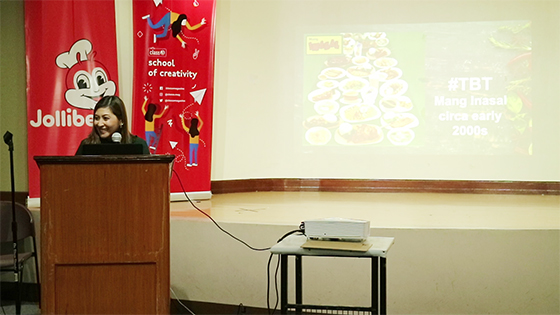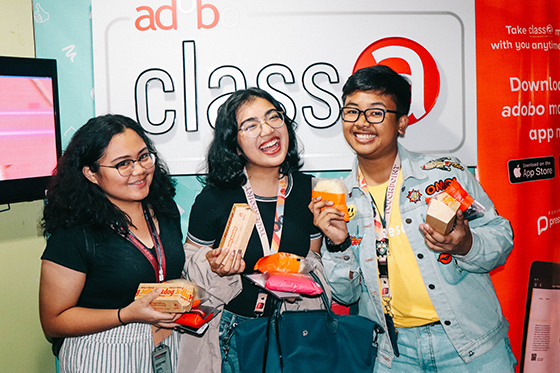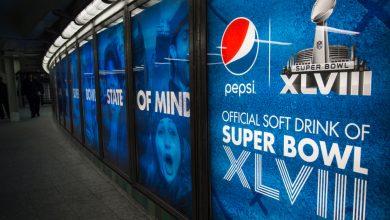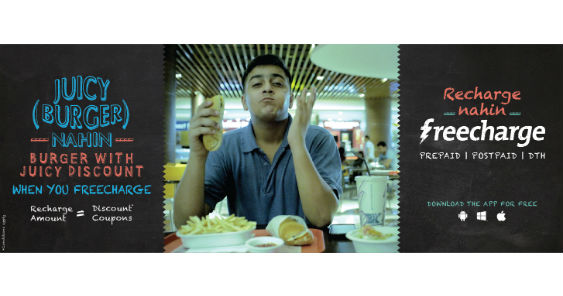For millenials and Generation Z, digital is not the future. It is the norm. That is the main takeaway from the leg of class a School of Creativity at the University of Santo Tomas on November 21, co-presented by Jollibee, in cooperation with UST CFAD Touchpoint.

With almost 200 advertising students in attendance, the leg revolved around the Jollibee Foods Corporation’s Way of Marketing, which is a product of solid research, consumer insights, emotional content and multimedia assets, especially digital.
Mari Aldecoa, Jollibee’s Marketing Director for Core Category, elaborated on the formula they have proven effective: Science + Art = Advertising. Directed creativity is finding the right combination of strategy, driven by research and data, and imagination, propelled by creativity. “Advertising is a combination of art and science to deliver blockbuster results.”, he says.
The efficacy of this duo is evident in the digital arena, where brand storytelling veers away from the traditional form. “Digital changed the way that marketers deliver messages and the way consumers accept and perceive these marketing messages.”, Aldecoa explains. The pervasive medium is all the more present in the Philippines with 105.7 million people, 67M of which are internet users, who in turn, are mostly on social media.
With this information at hand, JFC finds a way to stand out. The goal is to create blockbuster campaigns that generate high brand buzz and engagement. “The quality of the ad is directly related to the results it can deliver. The better the quality, the higher the market share, the higher the equity scores, the higher the sales.”, Aldecoa says.
In the digital platform, brands are free to extend beyond the 15-second TV commercial and explore long-form videos. JFC proved their digital prowess when it came with Kwentong Jollibee consisting of Crush, Date and Vow, with a total of 50,000,000 views combined. With its success, JFC launched another hit series, 14/29: Petsa de Peligro, which blurs the lines between advertising and entertainment. Campaigns like these have elevated Jollibee to be the country’s number one QSR brand in digital engagement, Aldecoa says
A main factor in successful digital campaigns is its emotional content. “Emotional advertising depends on the objective. Research tells us that consumers are more receptive when they are entertained. One form of entertainment is appealing to emotions, especially in the Filipino culture.”
Digital is only one of the many multimedia assets brands can explore. Renel Cecilio Guerrero, Red Ribbon’s Senior Category Marketing Manager, walked the participants through the step-by-step process of brand development from a single idea to multimedia.
It all starts with a purpose, she says. Purpose which is rooted in the company’s vision and mission revolving around bringing the joy of eating to everyone. Purpose is also anchored in the objective of every campaign, backed with landscape assessment, brand and business review, and marketing planning, before even going to the product development and launch.
When marketing a product, every move is anchored in one big idea. “It is important that there is one big idea that we can explode across all touchpoints.”, Guerrero explains. This depends on the consumer truth or consumer insight. An example is Red Ribbon’s Rainbow Dedication Cake, which is a favorite surprise of moms for their kids celebrating their birthday. This chocolatey and colorful cake was marketed in one full animation video— a first for a bakeshop. Aside from TV commercials, the one big idea was translated to other platforms, including digital, radio, PR, and in-store.
Choosing a multimedia touchpoint depends on your campaign objective.
But a product, even though well-marketed, must also be of great quality. That’s the main thrust of the talk of Mang Inasal Vice President and Marketing Head, Aileen Ricasata-Natividad.
Mang Inasal, fully-purchased by Jollibee in 2016, is known for its Bacolod-inspired chicken inasal. Throughout the years, they have chosen and improved other products that go along with their famous dish. “We need to identify what products we want to be famous for. Our chicken inasal is already popular and created loyal customers. So what products do we want to complement our main product? So it needs to be just the right number of products given the capacity of our kitchen.”, Aileen explains. Thus, sisig, halo-halo and meryenda were welcomed to the Mang Inasal table.

She shares the four main ingredients of food business success, which are crafting your menu, mastering each dish, levelling up your setup and selling your product.
In selling the product, initially, Mang Inasal focused on the food itself, thus coming up with the campaign for chicken inasal, “2-in-1 sa laki, noot sa ihaw sarap!” But that changed when they decided to inject emotional content and relatable value to their ads, seen in the campaign “Sarap ng Kaing Pinoy”. “Our strategy is about building strong brand love. It’s really more about emotional connection among our customers.”
Students eager to learn were also able to ask questions to the speakers in the panel portion. These young creatives are now convinced that advertising is the way to go.
Full with wisdom, students were also filled with treats from Jollibee and Red Ribbon.
To fuel their motivation more, class a magazine handed them copies of the latest issue, Human.
Now, they are ready to change the world though their creativity.










